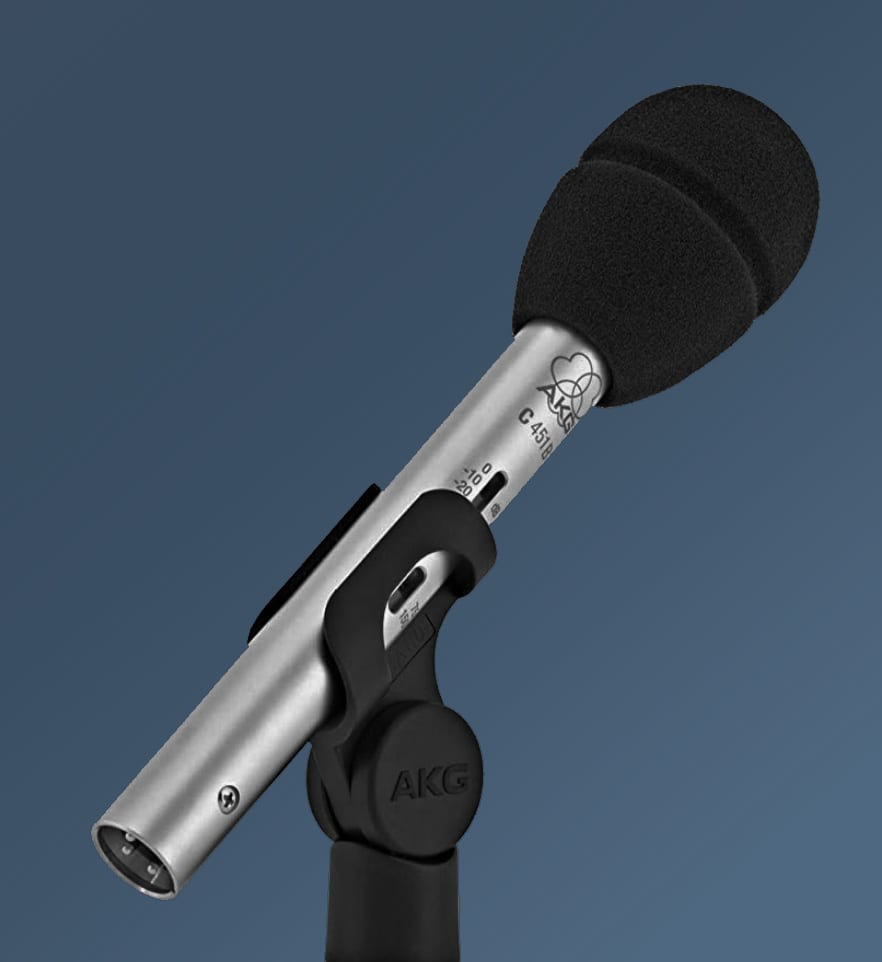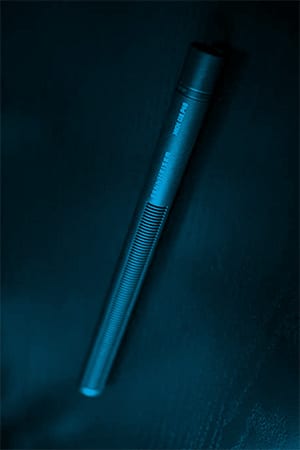When I began investigating how to narrate my audiobook, one of the very first questions I had was: What kind of mic do I need for voice acting? I dove right into researching the topic, scanned every web site, watched every video, and read every review. After a thorough investigation, I found the answer.
Large Diaphragm Condenser microphones are considered the recording industry standard for audiobook narrators. These mics are typically used in voiceover studios since they have a cozy, warm, rich lower end, with a complex middle and sparkling higher frequencies, perfect for voice work.
Table of Contents
Types of Microphones for Voice
I’ll talk about all four main types of mics used for voice: Large Diaphragm Condenser, Small Diaphragm Condenser, Dynamic, and Shotgun.
But mostly, we’ll discuss the Large Diaphragm Condenser Microphone, since, in my opinion, that is the perfect solution for voice acting and narration.
Large Diaphragm Condenser Microphones
I want to say a few things about large diaphragm condenser microphones and why they’re so often used in a voiceover. When you’re doing voiceover, most voiceover artists or engineers doing voiceover-type work are looking for a pleasant sound. A lush sound with a lot of low-frequency response for men’s voices, in particular, is the goal.

So it should have this warm, pleasant, easy to listen to sound, and that’s why I think a lot of voiceover artists end up using large-diaphragm condenser microphones.
Or, the Sennheiser MKH 416, which is actually a shotgun mic, but that sounds very much like a large-diaphragm condenser microphone. I’ll talk about shotgun mics a little later.
Now, what do I mean by that? Again, there is this very lush sound to it and a lot of rich low-end. But, they also still do quite a bit in capturing detail and nuance in the higher frequencies. They generally are not super accurate sounding.
Even if large-diaphragm condenser microphones have a flat frequency response, they very much sound like a broadcast. They sound rich on the low end, and then they have a crisp high end as well. So they’re not generally what I think of as natural sounding or more accurate sounding like a lot of smaller diaphragm condenser microphones.
I did some interesting reading over at the Neumann web site. Neumann makes high-end microphones and has for many many years. One of their most famous is the TLM-102. Anyway, this particular article talked about the differences between large-diaphragm and small-diaphragm condenser microphones.
I learned one thing, which comes as no surprise when considering the specs of large-diaphragm condenser microphones.
They sound rich on the low end, and then they have a crisp high end as well.
Technically (from an engineering standpoint), it’s easier to make a lower self-noise performance on large diaphragm condenser microphones than on small-diaphragm condenser mics. Just in the overall design, it’s easier to do that.
I don’t know exactly why, but that was a curious thing that I learned.
So that’s an important thing. On all of the microphones that we sampled, none of them had a problem with self-noise.
They weren’t generating a lot of hiss. That’s very important for voiceover as well. You don’t want that distracting hiss to take the audience out of the story.
Lest you think that large-diaphragm condenser microphones should be used for everything, there are some definite advantages for small-diaphragm condenser microphones. A lot of times, small-diaphragm condenser microphones are better at transient response. They have a smaller diaphragm that can follow the sound waves a little bit more accurately.
So, if you’re looking for a more accurate sound, that’s where those small-diaphragm condensers generally come in. Small-diaphragm condenser microphones are also a little bit better at capturing higher frequencies. Interestingly, they are generally more consistent in their polar pattern at different frequencies.
Whereas, a large-diaphragm condenser microphone, the polar pattern changes slightly more when you’re talking about lower frequencies, relative to the high frequencies.
I don’t know that it makes a massive difference for voiceovers.
Small Diaphragm Condenser Microphones

Small-diaphragm condensers are the best choice for sound accuracy, or when the desire is to capture pure and natural sound. They won’t make your voice richer and lusher. This type of mic has a more detailed sound profile. Because their sound is neutral, high-quality small diaphragm microphones are used for almost anything where accuracy is the goal.
Dynamic Microphones

Dynamic microphones are frequently used for live performances since they have a narrow field, and just capture the vocal in front of them without picking up all the crowd noise and other sounds. They are also used for amplifiers and all-purpose recording. Dynamic mics are extremely durable and are perfect for recording high volume and percussive instruments such as snare drums, guitar amps, and vocals.
Shotgun Microphone

The advantage of shotgun microphones is they focus directly on the sound source in front and pick up the sound with high gain. You can point it like a laser beam at your sound source. Any other noises present in the environment are very low if picked up at all.
One example of this type is the MKH 416 shotgun interference tube microphone. Its excellent directivity and compact design, high consonant articulation, and feedback rejection make it a great all-round microphone for film, radio, and television, especially for outdoor broadcast applications.
Where to Place the Microphone
Which microphone you choose is an important decision when you’re going to be doing voiceover work. But perhaps more importantly is the decision about where you’re going to record and what that space sounds like from an acoustic standpoint.
You’ll notice that many professional voiceover artists will record in vocal booths specifically treated and designed for recording. If you are in a position where you can’t afford that (I can’t afford one), I record in a space in my unfinished basement where I have sound blankets hanging on three sides.
That does a lot of the same things that you would get from a vocal booth. The important thing is you need to manage the reflections of sound off of hard surfaces, like walls, monitors, hard surfaces, etc.
What’s important is finding a space where you can manage some of those reflections. You can consider recording in your closet if you don’t have a studio with any bass traps or broadband traps.
Whether that’s a walk-in closet or even if it’s not, if you face the clothing, the clothes will dampen all of the sound before it has a chance to reflect off of hard surfaces.
You get a better recording.
How to Select a Mic for Your Voice
The takeaway message is, when you’re looking for a microphone, my hope here is that you’ll be able to find something that works well for your particular voice.
If you’re not sure what kind of voice you have, do a recording even if you use your phone. Hold your phone relatively close. Go into the closet where there’s not a lot of sound reflection. Make a recording and listen back to it.
Do you have a very nasally voice? Do you have a voice that has a lot of low-end? Or not a lot of low-end, and you’d like to emphasize and capture a little more low-end? Are you female? Check out this article on the best mics for female voice work.
All of those things can help you make a decision, and hopefully, my opinion here will give you a good sense of which of these microphones might be a better fit. Or at least give you some ideas of other microphones that you want to research more.
- Review of the ALABS IRON MINI-WL: A Powerhouse Wireless Microphone - October 4, 2023
- What is a Saturator in Music Production: A Brief Explanation - May 11, 2023
- What Are Rotary DJ Mixers? An Overview - May 11, 2023
SoundStudiomagic.com is a participant in the Amazon Services LLC Associates Program, an affiliate advertising program designed to provide a means for sites to earn advertising fees by advertising and linking to Amazon.com. We also participate in other affiliate programs which compensate us for referring traffic.

